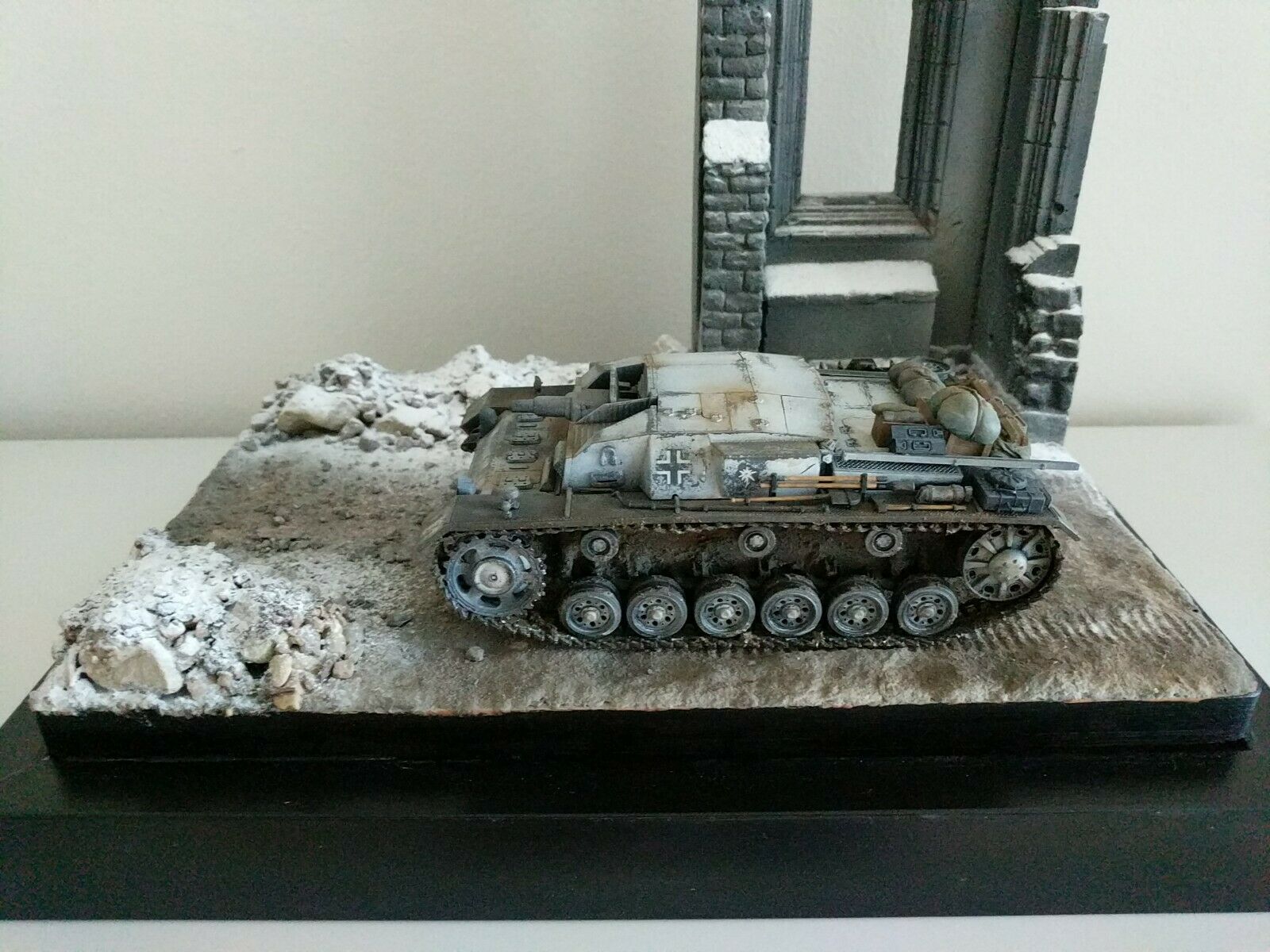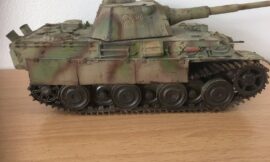The Sturmgeschütz III (StuG III) was one of the most successful and widely produced German armored vehicles during World War II. Initially designed as an infantry support vehicle, it evolved into a highly versatile and effective assault gun used in various roles on all fronts of the war. Here’s an overview of its development, design, capabilities, and operational history:
Development and Design
The development of the Sturmgeschütz III began in the 1930s, with the initial concept of providing direct fire support to infantry units. The first models were based on the chassis of the Panzer III medium tank, which provided a reliable platform for mounting a low-profile casemate-style superstructure housing the main armament.
The early versions of the StuG III were armed with a short-barreled 7.5 cm StuK 37 L/24 gun, primarily designed for infantry support and close-range engagements against fortified positions and light vehicles. As the war progressed and the need for an effective anti-tank capability became more pressing, the StuG III was upgraded with a longer 7.5 cm StuK 40 L/43 or L/48 gun, similar to those used on the Panzer IV and Panther tanks. This upgrade significantly enhanced its anti-tank capabilities, allowing it to engage and destroy Allied tanks effectively.
Armament and Capabilities
The main armament of the StuG III varied depending on the model and production variant:
- Early Versions: Armed with a 7.5 cm StuK 37 L/24 gun, which fired high-explosive and armor-piercing rounds. It was effective against infantry, fortifications, and light vehicles but less capable against heavily armored tanks.
- Mid to Late War Versions: Upgraded to a 7.5 cm StuK 40 L/43 or L/48 gun, which had superior armor-piercing capabilities. The L/48 version in particular could penetrate the frontal armor of most Allied tanks at medium ranges, making the StuG III a potent tank destroyer.
The StuG III lacked a turret, which lowered its profile and reduced its weight, making it more suitable for ambush tactics and defensive operations. This design also simplified production and maintenance compared to fully turret-equipped tanks.
Armor and Protection
The armor protection of the StuG III varied throughout its production run. Early versions had armor ranging from 30 mm to 50 mm on the front, while later models were up-armored to withstand increasing Allied firepower. The armor layout and sloped design provided effective protection against small arms fire, shell splinters, and shrapnel, although direct hits from anti-tank guns and tank cannons remained a significant threat.
Mobility and Performance
The StuG III shared the same chassis and propulsion system as the Panzer III tank, which initially featured a Maybach HL 120 TRM engine producing around 300 horsepower. This provided it with good mobility and a top speed of approximately 40 km/h (25 mph) on roads. The suspension system, based on torsion bars, allowed the StuG III to maneuver across various types of terrain, although its cross-country performance was somewhat limited compared to dedicated tank designs.
Operational History
The StuG III was widely used by the German Wehrmacht and Waffen-SS throughout World War II. It played a crucial role in numerous campaigns and battles, serving on all fronts from North Africa and the Mediterranean to the Eastern Front and Western Europe. It was employed in various roles:
- Infantry Support: Initially designed for close support of infantry units, providing fire support against enemy strongpoints, machine gun nests, and fortified positions.
- Tank Destroyer: With the introduction of the 7.5 cm StuK 40 gun, the StuG III became a highly effective tank destroyer, capable of engaging and destroying Allied tanks at considerable ranges.
- Artillery Support: It was also used for indirect fire support, targeting enemy artillery positions and providing suppressive fire during offensive and defensive operations.
The StuG III’s reliability, firepower, and versatility made it a preferred choice among German commanders, especially as the war progressed and resources became increasingly scarce. Its low profile and effective use of camouflage made it difficult for Allied forces to spot and target, further enhancing its combat effectiveness.
Legacy and Impact
The Sturmgeschütz III is considered one of the most successful armored fighting vehicles of World War II, with over 10,000 units produced between 1940 and 1945. Its design influenced subsequent tank destroyer concepts and post-war armored vehicle development, emphasizing the importance of firepower, protection, and mobility in armored warfare.
Conclusion
The Sturmgeschütz III, with its formidable firepower, robust armor, and operational flexibility, played a crucial role in the German armored forces throughout World War II. From infantry support to tank destroyer roles, it demonstrated versatility and effectiveness on the battlefield, earning a prominent place in military history as one of the most iconic and successful tank destroyers of its time.















